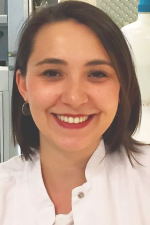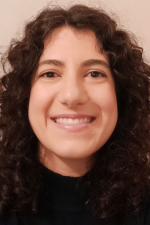Research focus
The Albena Jordanova Lab focuses on the identification and characterization of genes and pathways implicated in the molecular etiology of inherited neuromuscular disorders, like motor and sensory peripheral neuropathies and spastic paraplegias. This is our way to understand the molecular pathomechanisms and design strategies for prevention and treatment of these devastating diseases. The research strategy is not limited to one experimental approach, but starts with genetic studies in unique collections of patients and extends to model systems, like Drosophila, yeast or human cells.
The main research projects are:
- Identification of novel causative genes for inherited forms of peripheral neuropathies and spastic paraplegias using family and population based genetic approaches;
- Neurogenetics studies in the Roma/Gypsy population;
- Unraveling the role of aminoacyl-tRNA synthetases in degeneration of peripheral nerves;
- Unraveling the role of HINT1 in the etiology of peripheral neuropathies associated with neuromyotonia
 Prof. Albena Jordanova
Prof. Albena Jordanova
Hereditary motor and sensory peripheral neuropathies (known as Charcot-Marie-Tooth disease, CMT) and hereditary spastic paraplegias (HSP) are rare but severe neuromusculat disorders found in all ethnic groups. They are currently untreatable, justifying further research on their etiology. We aim to better understand the molecular basis of CMT and HSP by finding causative genes and regulatory networks contributing to their pathology, as this knowledge offers particular translational opportunities. A unique entry point are large collections of nuclear families, where consanguinity or ethnic/geographic origin facilitates gene discovery. A specific population where we perform neurogenetics studies is the Gypsy founder population. Referred to as “the invisible minority”, Gypsies represent the largest transnational genetic and socio-cultural isolate of Europe. Studying their unique genetic heritage enables us to identify novel disease entities, to perform genotype-phenotype correlations in genetically homogeneous groups of patients and to tackle genetically and clinically heterogeneous neurological disorders. Using genetic approaches for mapping of human disorders combined with the most recent advances in next-generation sequencing and bioinformatics technologies, we create a powerful tool for gene identification. The causality of identified mutations and the triggered molecular pathomechanisms are further tested in appropriate cellular and animal models.
Our research contributed to the recognition of aminoacyl-tRNA synthetases as important players in neurodegeneration. We first reported that mutations in the tyrosyl-tRNA synthetase (TyrRS, YARS) cause Dominant Intermediate CMT disease type C (DI-CMTC). TyrRS, along with six other ARS comprise the largest family of proteins associated with CMT neuropathies. These enzymes are ubiquitously expressed; they are required for protein biosynthesis and are therefore indispensable for viability. It is enigmatic how mutations in these primordial enzymes can lead to a peculiar specificity of the pathophysiological deficit, characterized by degeneration of the peripheral nerves only. We were the first to establish that the DI-CMTC phenotype is not due to haploinsufficiency of TyrRS enzymatic activity, but to a gain-of-function alteration of the mutant YARS or interference with an unknown function of the wild type protein. To unravel the alternative function of YARS in the nervous system we developed the first Drosophila model for inherited peripheral neuropathy, as well as appropriate cellular and yeast models. Disease hypotheses are functionally tested in flies and mammalian cells to understand the crucial pathways affected by mutant YARS and how this contributes to neurodegeneration. We further search for pathomechanistic commonalities among all tRNA synthetases implicated in CMT.
In 2012 we reported that mutations in HINT1 cause AR-CMT associated with neuromyotonia. Mutations in this ubiquitous purine phosphoramidase contribute significantly to CMT morbidity, however the mechanisms triggered by the loss of HINT1 function are completely unexplored. We integrate functional biological approaches in yeast and mammalian cells to understand how mutations in HINT1 lead to CMT and to translate this knowledge into therapeutic opportunities. In a parallel tech transfer road, we make use of our model systems and head-start knowledge to search for compounds able to correct the loss of HINT1 function and this way alleviate the development of CMT neuropathy.
Team

Albena Jordanova
Full Professor
Akram Khanghahi
Post-Doctoral Researcher
Silvia Amor Barris
Post-Doctoral Researcher
Ayşe Candayan
Post-Doctoral Researcher
Laura Morant
Post-Doctoral Researcher
Maria-Luise Petrovic-Erfurth
Post-Doctoral Researcher
Alexandra Ekshteyn
PhD student
Luiza Lorena Pires Ramos
PhD Candidate
Carlos Aguirre Flores
PhD student
Els De Vriendt
Technician
Ivy Cuijt
Technician
Sophia Datsen
Master student